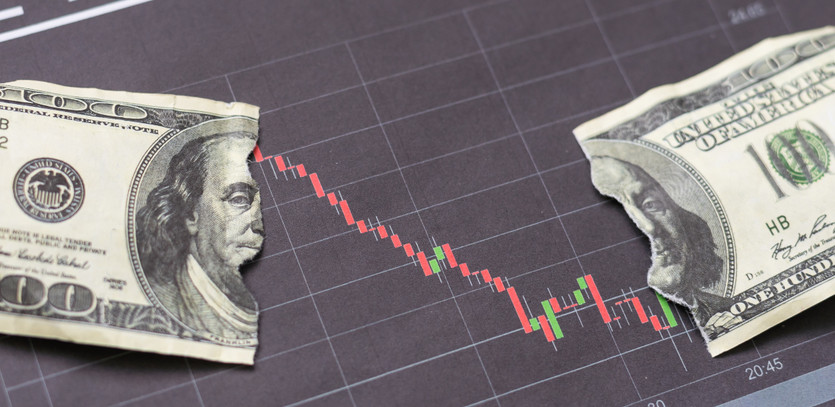Navigating the Market Indicators: A Foreword
In the dynamic world of currency and commodity trading, investors and traders are constantly on the lookout for trustworthy pointers that can provide an educated prediction of the dollar's upward or downward trajectory. Akin to the varied range of indicators stock traders employ to assess the vigor of companies, a plethora of economic reports is available that can illuminate the future path of the dollar's value.
Leveraging Fundamental Analysis: A Key Approach
Understanding Fundamental Analysis
At the heart of successful investing lies Fundamental Analysis – a strategy that entails a careful evaluation of data to extract pertinent insights about an investment. Given the fluid nature of economies, the impact and relevance of a specific data point can swing considerably. For instance, when the U.S. economy is on an upswing, an escalating concern over inflation might shift investors' attention to data points that signal a rise in inflationary pressure.
On the other hand, during a phase of economic contraction, reports revealing a dip in consumer activities may have a greater influence on the dollar's course. Thus, access to a wide spectrum of economic reports becomes a valuable resource for anyone seeking to gain in-depth insights on the dollar's movement.
Notable Macroeconomic Indicators
Among the myriad macroeconomic indicators available to investors, some command a significant interest. But, it's important to remember that the raw statistics are often less consequential compared to their trend (whether they're on an upward or downward trajectory) and how they measure up against expectations before their release. Positive surprises may spark optimism and bolster the dollar, while negative ones could trigger a sharp descent in its value.
Key Indicator 1: Trade Balance
Insights into Import-Export Dynamics
The Trade Balance Report, a joint creation of the Bureau of Economic Analysis (BEA) and the U.S. Census Bureau, provides invaluable insights into the intricacies of import and export activities. The nominal trade deficit, calculated as the current dollar value of U.S. exports minus U.S. imports, serves as a crucial metric within this report. If a nation's imports exceed exports, it's said to have a trade deficit; conversely, if exports surpass imports, the nation enjoys a trade surplus.
Trade Deficit and Surplus: The Dollar's Nemesis and Ally
A trade deficit could spell trouble for the dollar as it signals a stronger demand for foreign goods. These goods are, in the end, bought with foreign currencies, thereby escalating the demand for those currencies. On the contrary, a trade surplus indicates that overseas consumers are snapping up more American goods, leading to increased demand for the dollar.
Timing of Trade Balance Report
This vital report is generally made available around five weeks after the end of the month it pertains to, precisely at 8:30 A.M. Eastern Standard Time, and comprises data from the preceding two months.
Key Indicator 2: Nonfarm Payroll
Keeping Tabs on Employment Trends
The Nonfarm Payroll Employment Report, compiled by the U.S. Department of Labor Bureau of Labor Statistics (BLS), provides a clear picture of monthly job additions or losses. A steady job growth, indicative of a robust economy, may trigger an upward shift in interest rates. Higher interest rates are alluring to foreign investors, thereby boosting the U.S. dollar's demand.
How Job Losses Impact the Dollar
Contrastingly, job losses could pull interest rates down and undermine the appeal of the dollar. The Nonfarm Payroll Report typically makes its appearance on the Friday following the month it refers to, at 8:30 A.M. EST.
Key Indicator 3: Gross Domestic Product
GDP: A Reflection of the Nation's Economic Health
Gross Domestic Product (GDP) measures the monetary value of all finished goods and services produced within a country's borders over a specific period, acting as a reflection of the nation's economic strength. Akin to the nonfarm payroll data, an uptick in GDP tends to drive interest rates – and subsequently, the dollar – upwards. However, a declining GDP might send the dollar on a downward trajectory.
When is GDP Data Released?
The Bureau of Economic Analysis reveals the GDP data at 8:30 A.M. EST approximately one month after the conclusion of each quarter.
Key Indicator 4: Retail Sales
Understanding Retail Sales
Retail sales, which represent the sales of retail goods over a set timeframe, provide a snapshot of the economy's vitality. A buoyant economy is generally associated with robust sales and, consequently, a strong dollar.
The Retail Sales Report: A Crucial Indicator
The Retail Sales Report, which is compiled and released by the Census Bureau and the Department of Commerce, is disseminated on a monthly basis. This report, which covers data from the prior month, is typically unveiled around the 15th of the month at 8:30 A.M. EST.
Key Indicator 5: Industrial Production
What does Industrial Production Represent?
Industrial Production figures showcase the raw volume of goods churned out by industrial entities such as factories, mines, and electric utilities in the U.S. Traditional manufacturers such as publishers of newspapers, periodicals, and books are also included in these figures.
The Link Between Industrial Production and Economic Activity
Industrial Production data usually mirror changes in the overall economic activity. Therefore, robust figures indicate a bullish outlook for the dollar, while weak data flags bearish prospects.
Release of Industrial Production Figures
The Federal Reserve Board unveils the industrial production figures around the 15th of each month at 9:15 A.M. EST, and the report covers the previous month.
Beyond Traditional Indicators
Apart from the indicators detailed above, there's a host of additional indicators such as inflation reports, home sales, and foreign purchases of U.S. Treasury securities. These reports also hold sway over the dollar's direction, coupled with other influencing factors.
Government and Geopolitics: Their Role in Shaping the Dollar
Governmental activities play a pivotal role in determining the dollar's strength, as foreign investors are always on the lookout for signs of stability and growth. Consistent policies, a tranquil geopolitical landscape, and consumer tax cuts typically spell good news for the dollar. In contrast, events like terrorist attacks, wars, heightened government spending, and unfavorable political leadership can cast a dark shadow over the dollar's future.
International Events: A Potential Double-Edged Sword
International events also play a role, with developments like a strengthening euro or declining foreign reserves posing a threat to the dollar. On the other hand, instability in foreign countries can potentially work in the dollar's favor.
Concluding Remarks
In conclusion, investors who deal with U.S. currency have a wealth of data at their disposal, with a vast range of elements influencing the dollar's value. Among the many indicators that could potentially influence the dollar's course, this article outlined some of the most noteworthy ones.





